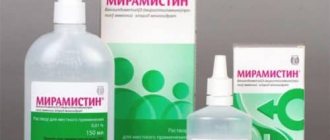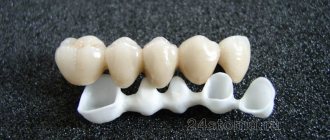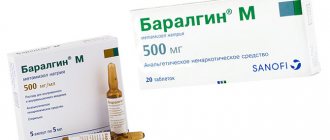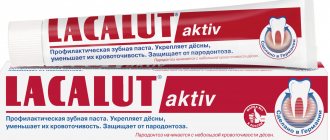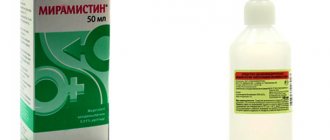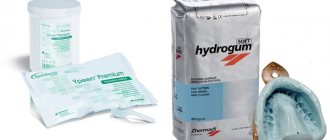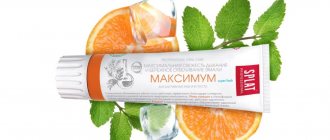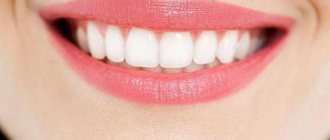Dear friends, hello!
Today, at your request, we will compare two antiseptics: Chlorhexidine and Miramistin.
We will read the instructions of both remedies and find out what their differences are, when it is better to offer Chlorhexidine, and when Miramistin.
I'll also jot down a list of customer requests for which you can offer them.
Go!
History of the invention of drugs
Chlorhexidine is an antiseptic. It was invented by British scientists in the early 30s. Since that time, the antiseptic has become a real salvation for most doctors. The drug was considered especially valuable in Africa and Asian countries. Volunteers actively used it to treat people. Chlorhexidine was also used in the Soviet Union. Even today, this medicine can be found in pharmacies. At the same time, many consider Chlorhexidine to be a domestic remedy, but this is a mistaken opinion.
Domestic scientists invented Miramistin. This happened in 1970. The USSR government set the project group on space technologies the task of creating a universal antiseptic. It was planned to be used at orbital stations. The spacecraft is characterized by a closed space, high levels of humidity and constant temperature conditions.
Such conditions contributed to the proliferation of pathogenic fungi and microorganisms. Existing remedies turned out to be ineffective because they did not inhibit some bacteria. This experiment ended successfully. The antiseptic was named BH-14. In the 90s, the drug entered all pharmacies and gained enormous popularity. Pharmaceutical companies in other countries do not produce drugs based on miramistin. However, among foreign drugs there is its analogue - Octenisept.
What are the differences?
Many patients are interested in whether Miramistin can be replaced with Chlorhexidine?
The antiseptic "Chlorhexidine" contains only one active component. That is, it is a monodrug. The product is produced in the form of an aqueous or aqueous-alcohol solution. It contains from 0.05 to 5% chlorine, which is toxic to pathogens and the human body.
Polyoxidonium or Galavit, which is better?
The drug is highly effective, but it also has many disadvantages. In this regard, domestic scientists decided to create a safer product. Thanks to these works, Miramistin appeared.
Who do they act on?
Chlorhexidine
Targets for him:
- various microorganisms, including staphylococci, streptococci, chlamydia, ureaplasma, pathogens of syphilis, gonorrhea.
- mushrooms – the types are not specified in the instructions.
- viruses covered with an additional shell. They are also called “complex” or “complexly organized”.
Simple viruses consist of DNA or RNA (i.e., a molecule that stores genetic information) and a protective protein shell (capsid) surrounding it.
Complex viruses have an additional shell consisting of lipoproteins. This is what Chlorhexidine destroys, causing the death of the virus.
Examples of complex viruses: herpes simplex virus, human immunodeficiency virus (HIV).
Most of the viruses that cause ARVI are simple, so gargling with Chlorhexidine in the first days of ARVI does not make sense.
- Protozoa. For example, Trichomonas are the causative agents of trichomoniasis.
Miramistin
It acts on the same pathogens as Chlorhexidine.
In addition:
- active against hospital strains. These are types of microbes that have adapted to life in a hospital environment. They are not taken by standard antibiotics because they have mutated and acquired special properties. Most often these are Staphylococcus aureus, Streptococcus, Escherichia coli, Proteus, Klebsiella, Pseudomonas aeruginosa, etc. It is these microbes that are often responsible for the development of severe purulent processes in weakened patients who have been in the hospital for a long time.
- active against yeast fungi, dermatophytes (the main causative agents of mycosis of the feet), ascomycetes (a type of mold fungi). It even works on those mushrooms that have become resistant to antifungal agents.
On the Internet I came across Miramistin ointment, which is indicated, among other things, for the treatment of mycoses of the feet. But I didn’t find it in Russian pharmacies. Or is there?
Conclusion:
The spectrum of action of Miramistin is higher.
Main difference
"Miramistin" is the same monopreparation based on water and benzyldimethyl ammonium chloride monohydrate. It does not contain any additives or toxic components. This is precisely what distinguishes Miramistin from Chlorhexidine. At first, this drug was actively used only in two areas: obstetrics and dermatology.
The main difference between the drugs is that Miramistin:
- – as safe as possible for the body;
- – can be used not only in the field of dermatology.
The composition of the drugs is completely different. Miramistin was developed for disinfection in space conditions. It helped cope with viruses and pathogenic microbes. Chlorhexidine was used to disinfect surgical instruments, and also to treat medical personnel before surgery.
Today, many pharmacists offer to buy Chlorhexidine instead of Miramistin. Both drugs are actively prescribed in the field of urology and gynecology. Antiseptics are used to disinfect wounds and skin burns. The drugs are also used in the treatment of sexually transmitted diseases. "Chlogrexidine" can indeed be considered an analogue of "Miramistin". Its small concentrations help cure inflammation in the oral cavity.
But “Miramistin” is used to treat inflammation of the respiratory organs and sinusitis. It can be prescribed for inflammation in the joints. Chlorhexidine is used to impregnate sanitary napkins; the drug is used to treat the clothes of patients in hospitals. Taking this into account, we can say that the domestic antiseptic has a wider range of uses.
Indications
The range of uses of Miramistin is quite wide. So, the attending physician may prescribe the use of Miramistin in the following cases:
- In traumatology and surgery: prevention of suppuration, treatment of purulent wounds. Used in the treatment of purulent-inflammatory diseases of the musculoskeletal system.
- In obstetrics and gynecology: treatment and prevention of suppuration of wounds and injuries received during childbirth, treatment of inflammatory and infectious processes of the genital organs (vulvovaginitis, endometritis).
- In venereology and dermatology: treatment and prevention of dermatomycosis, pyoderma, also used for mycoses of the feet, candidiasis of the skin and mucous membranes, in particular, for thrush.
- In urology: treatment of urethritis (acute and chronic forms) and urethroprostatitis.
- In dentistry: prevention of infectious and inflammatory processes occurring in the oral cavity. Treatment of stomatitis, gingivitis, periodontitis. Miramistin also carries out hygienic treatment of removable dentures.
- In otorhinolaryngology: used for sinusitis, otitis, laryngitis, pharyngitis, chronic tonsillitis. Miramistin is prescribed for sore throat. In particular, the drug is used in complex therapy for pharyngitis, chronic tonsillitis, as well as for sore throat in children from the age of three.
- Combustiology: treatment of superficial and deep burns of II and IIIA degrees, preparation of burn wounds for dermatoplasty.
- The solution is used for individual prevention of the development of diseases that are sexually transmitted to humans (syphilis, gonorrhea, chlamydia, trichomoniasis, genital herpes, genital candidiasis, etc.).
What are the similarities?
When choosing between two drugs, it is important to determine not only the differences, but also the similarities. According to doctors, Miramistin and Chlorhexidine are similar in the following parameters:
- – have an antiseptic and antibacterial effect;
- – destroy the shells of pathogenic microorganisms;
- – healing properties are preserved even when treating purulent and bloody wounds;
- – bacteria and fungi are very sensitive to these antiseptics;
- – both drugs are actively used for skin disinfection.
Almagel or Phosphalugel, which is better for gastritis?
It is recommended that you consult your doctor before using any of these antiseptic medications.
Analogs for children
Pediatricians recommend using Malavit to replace miramistin and chlorhexine.
This is a unique natural preparation that includes active bio-complexes of silver, copper, mumiyo and other natural substances. Malavit is prescribed in otolaryngology, gynecology, and dentistry. The product can also be used to treat affected areas of the skin (wounds, burns, bites, etc.).
Malavit has anti-inflammatory, antibacterial, decongestant, antipruritic and antifungal effects. The drug, according to official instructions, is used after the age of five. In practice, it is used earlier, after first reducing the concentration of the solution.
The drug “Dekasan” is also suitable as an analogue. It is capable of destroying bacterial and fungal microflora and preventing the proliferation of viral infections. The widest range of uses of dekasan is for diseases of the oral cavity.
They are often inhaled to treat infectious and inflammatory diseases of the throat (sore throat, tonsillitis, pharyngitis).
Also in children's practice, Lugol, chlorophyllipt (alcohol and oil solution), ingalipt, Gorlospas, faringosept and decatylene tablets, and other agents are often used.
Manifestations of adverse reactions
“Miramistin” and “Chlorhexidine” are used to treat the skin and mucous membranes. Both drugs can cause allergies and even anaphylactic shock.
After using drugs on the nasal mucosa, the patient feels a burning sensation. With Miramistin it does not cause obvious discomfort and goes away quite quickly. But “Chlorhexidine” burns very strongly and even dries out the nasopharynx. The discomfort lasts a long time.
For angina, doctors often prescribe Chlorhexidine. After using it, the following occurs:
- – feeling of bitterness in the mouth;
- – irritation of the mucous membrane;
- – tooth enamel may change color;
- – stones form on the teeth;
- – taste qualities are lost.
For the treatment of throat diseases in pediatrics, it is better to use Miramistin.
How to use Miramistin
The use of Miramistin as an antiseptic drug is quite widespread. In addition to the areas listed in the table below, the medicine is prescribed for the treatment of acne, as a prevention of influenza and colds, and for diaper rash.
How to use Miramistin correctly
Please note that Miramistin may cause irritation of the nasal mucosa.
Any prescription of the drug, indication of the dosage and duration of the course are made by the attending physician.
| Disease | Course duration | Reception |
| Purulent sinusitis. Tonsillitis, pharyngitis and laryngitis. | From 4 to 10 days. | The maxillary sinus is washed with a sufficient amount of the drug. Gargling and/or irrigation (10-15 ml) 3-4 times a day is indicated. |
| Stomatitis, gingivitis, periodontitis. | Until remission occurs. | Rinse the mouth with 10-15 ml of the drug, 3-4 times a day. |
| Surgery, traumatology, combustiology. | 3-5 days. | 2-3 times/day. irrigate the surface of wounds and burns, loosely pack wounds and fistula tracts, fix gauze swabs soaked in the drug. |
| Prevention of postpartum infection. C-section. | 5-7 days. 7 days. | Irrigation with a gynecological nozzle is indicated before childbirth, during childbirth, after each vaginal examination and in the postpartum period, 50 ml of the drug in the form of a tampon (2 hours). Before the operation, the vagina is treated, during the operation - the uterine cavity and the incision on it, and in the postoperative period, tampons moistened with the drug are inserted into the vagina (2 hours). |
| Angina. | Until remission occurs. | Rinse 4-5 times/day. |
| Urethritis and urethroprostatitis. | 10 days. | Miramistin is injected using a urological applicator into the urethra 2-3 ml 1-2 times a day. |
| Prevention of sexually transmitted diseases. | Miramistin is used no later than 2 hours after sexual intercourse. | Using a urological applicator (gynecological attachment), insert Miramistin into the urethra for 2-3 minutes: for men (2-3 ml), for women (1-2 ml) and in the vagina (5-10 ml). Treat the skin of the inner thighs, pubis, and genitals. After the procedure, it is recommended not to urinate for 2 hours. |
| Thrush, inflammatory diseases of the genital organs. | 7-14 days. | A tampon is moistened with Miramistin and inserted intravaginally. Douching is indicated. |
| Purulent otitis. | Until remission occurs. | 2 ml of solution is injected into the external auditory canal. |
Miramistin during pregnancy and lactation
Miramistin can be used by pregnant women and nursing mothers, but, as is usually the case with this group of patients, use is possible after consulting the doctor supervising them. They can be used to gargle, rinse the nose and treat affected surfaces, since Miramistin does not enter the bloodstream. But in any case, an obstetrician-gynecologist should prescribe the drug during pregnancy and breastfeeding.
Miramistin for children
Miramistin for children
If we touch on the issue of using Miramistin in pediatrics, the drug can be prescribed by a doctor for children during an exacerbation of pharyngitis or during the exacerbation stage of chronic tonsillitis. If such conditions are diagnosed, then most likely the pediatrician will prescribe irrigation of the child’s throat with Miramistin.
- children 3-6 years old: press the head of the spray nozzle once (3-5 ml per irrigation), 3-4 times/day;
- children 7-14 years old: press twice (5-7 ml per irrigation), 3-4 times/day;
- children over 14 years old: 3-4 times pressing (10-15 ml per irrigation), 3-4 times/day.
As for the nose, care should be taken here, since Miramistin can have an irritating effect on the mucous membrane. Also, Miramistin is prescribed to young patients if they have chickenpox. The skin is treated with Miramistin in order to disinfect it. If the drug is prescribed to an infant, it is most likely for the treatment of surfaces that require disinfection. Miramistin, due to its composition, accelerates the regeneration of the epithelium. After the drug has dried naturally, you can use diaper rash cream or a special powder containing talc.
The instructions for use stipulate the age of the child from which the use of Miramistin is permissible. Thus, children under one year of age undergo therapy with Miramistin only under the supervision of a specialist; children up to three years of age can be prescribed the drug solely for indications. Remember that children's bodies are sensitive, and even such a safe drug as Miramistin can cause allergic reactions.
Analogs
Analogs
At the moment, one structural analogue of the drug Miramistin has been released on the pharmacological market:
- Okomistin (eye drops).
If you do not take into account the composition, then in terms of therapeutic action the antiseptic Chlorhexidine is closest to the drug Miramistin. You can also note Octenisept.
Miramistin or Chlorhexidine?
Most often, when they talk about replacing the drug Miramistin, Chlorhexidine is cited as an example. What is the significant difference between these drugs? If you focus on the indications for use, they are almost identical. True, it is believed that Chlorhexidine has more side effects and is generally toxic. But this disadvantage has a downside. This “aggressiveness” is directed against microbes. Miramistin is a more gentle remedy, it is safe, so it is prescribed for the treatment even of infants. The drug Miramistin does not monitor negative reactions of the body to its use; it is less likely to cause a burning sensation and unpleasant consequences in the form of dysbacteriosis.
Adverse reactions in the field of dentistry
Miramistin is the safest in the treatment of dental diseases. Even accidental ingestion of the product will not harm the patient.
Chlorhexidine can only be used to rinse your mouth or treat your teeth. Accidental ingestion of the product is strictly prohibited. If this happens, you need to urgently rinse the stomach or induce vomiting. After this, take enterosorbent. Adverse reactions of the drug:
- – changes the color of tooth enamel;
- – disrupts taste;
- – promotes the formation of stone on teeth.
Samelix or Heptral, which is better, doctors’ opinion
Forms and stages of the disease for which treatment makes sense
Before trying to cure yourself with the remedy described, you need to understand what exactly caused conjunctivitis : bacteria, fungi or viruses:
- If the cause is an aggravated allergy , then Miramistin should be used together with antihistamines.
- In cases where the cause of inflammation is a fungus, washing with Miramistin is indicated four to six times a day .
- In case of acute bacterial infection, rapid positive dynamics in treatment will help to achieve alternation of Miramistin solution with other medications that have similar properties.
Also, this drug has such a valuable property - increasing local immunity, which is extremely important if the cause of conjunctivitis is a virus.
Keep in mind! For greater progress in the treatment of viral conjunctivitis, Miramistin should be used with immunostimulants.
Miramistin solution in the early stages of the disease .
The doctor's prescription of complex treatment along with Miramistin means that conjunctivitis has moved to the next stage, in which strong antimicrobial agents are used.
In this case, before using the drug with an antibiotic, the eye is washed with Miramistin solution.
The frequency and duration of use is prescribed exclusively by a specialist.
Advantages and disadvantages of drugs
- Both remedies are equally effective. At the same time, Miramistin has a neutral taste, while Chlorhexidine has an unpleasant and bitter taste.
- "Miramistin" works as gently as possible, without irritating the mucous membranes. After using Chlorhexidine, a burning sensation appears.
- The use of “Chlorhexidine” is prohibited during pregnancy, lactation, and also for children. Miramistin has no such contraindications.
- Chlorhexidine should not be swallowed. Even a small amount of a substance can cause irreversible consequences. In such a situation, you urgently need to rinse your stomach. Accidental ingestion of Miramistin is safe for the patient’s health.
The presence of obvious advantages affects the choice of drug. However, most patients are not put off by the low price. However, there are cases when affordability comes to the fore and patients turn a blind eye to the obvious shortcomings of the drug.
